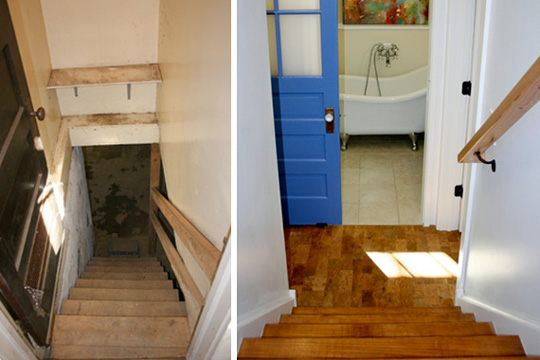
Greening Up Below Ground: Navigating Sustainable Basement Renovations
Embarking on a basement renovation journey? Why not make it an eco-friendly one? Sustainable basement renovations not only reduce your environmental footprint but also create a healthier and more energy-efficient living space. Let’s delve into the world of sustainable transformations for your underground haven.
1. The Foundation of Sustainability
Before diving into the renovations, consider the foundation of your sustainable project – literally. Assess the insulation, waterproofing, and energy-efficient practices that form the groundwork for your eco-friendly basement. Ensuring a solid and sustainable foundation sets the stage for a green renovation.
2. Sustainable Flooring Choices
Start your sustainable basement journey from the ground up with eco-friendly flooring options. Explore materials like bamboo, reclaimed wood, or cork that not only add a natural touch to your space but also come from renewable sources. These flooring choices are durable, visually appealing, and contribute to a greener home.
3. Energy-Efficient Lighting Solutions
Light up your basement sustainably by opting for energy-efficient lighting solutions. LED bulbs and fixtures consume less energy, have a longer lifespan, and reduce your overall carbon footprint. Incorporate natural light whenever possible through strategically placed windows or even consider a solar tube for basement spaces without direct access to sunlight.
4. Recycled and Reclaimed Materials
Give your basement a unique character by using recycled or reclaimed materials in your renovations. From reclaimed wood for accent walls to recycled glass for countertops, these materials not only add charm but also divert waste from landfills, making your project more sustainable.
5. Low VOC Paints for Healthier Air
Improve indoor air quality in your basement by choosing low volatile organic compound (VOC) paints. Traditional paints release harmful chemicals into the air, contributing to indoor air pollution. Low VOC paints provide a healthier alternative, reducing the impact on your respiratory health and the environment.
6. Efficient Windows and Insulation
Invest in energy-efficient windows and insulation to regulate temperature and reduce energy consumption. Double-pane windows and high-quality insulation materials help maintain a comfortable environment in your basement without relying heavily on heating or cooling systems, ultimately saving energy.
7. Water Conservation Strategies
Consider water conservation strategies during your basement renovations. Install low-flow plumbing fixtures and water-efficient appliances to minimize water usage. Collect and repurpose rainwater for non-potable purposes, contributing to both sustainability and cost savings.
8. Smart Home Technology Integration
Bring your basement into the future with smart home technology. Integrate energy-efficient and smart devices that allow you to monitor and control energy usage. Smart thermostats, lighting, and appliances contribute to a more sustainable and technologically advanced living space.
9. Indoor Plants for Natural Air Purification
Enhance the air quality in your basement with the addition of indoor plants. Certain plant varieties act as natural air purifiers, removing toxins and improving overall air quality. Incorporate a variety of indoor plants to create a fresh and inviting atmosphere.
10. Explore Sustainable Possibilities at Sustainable Basement Renovations
For a wealth of inspiration and expert guidance on sustainable basement renovations, visit Sustainable Basement Renovations. Discover innovative ideas, eco-friendly materials, and sustainable practices that can guide you in creating a basement that aligns with your commitment to a greener lifestyle.
Embarking on sustainable basement renovations is not just about making your space aesthetically pleasing; it’s about adopting practices that contribute to a healthier planet. By incorporating these eco-friendly strategies, your basement can become a testament to the possibility of creating a stylish, comfortable, and sustainable living space below ground.
